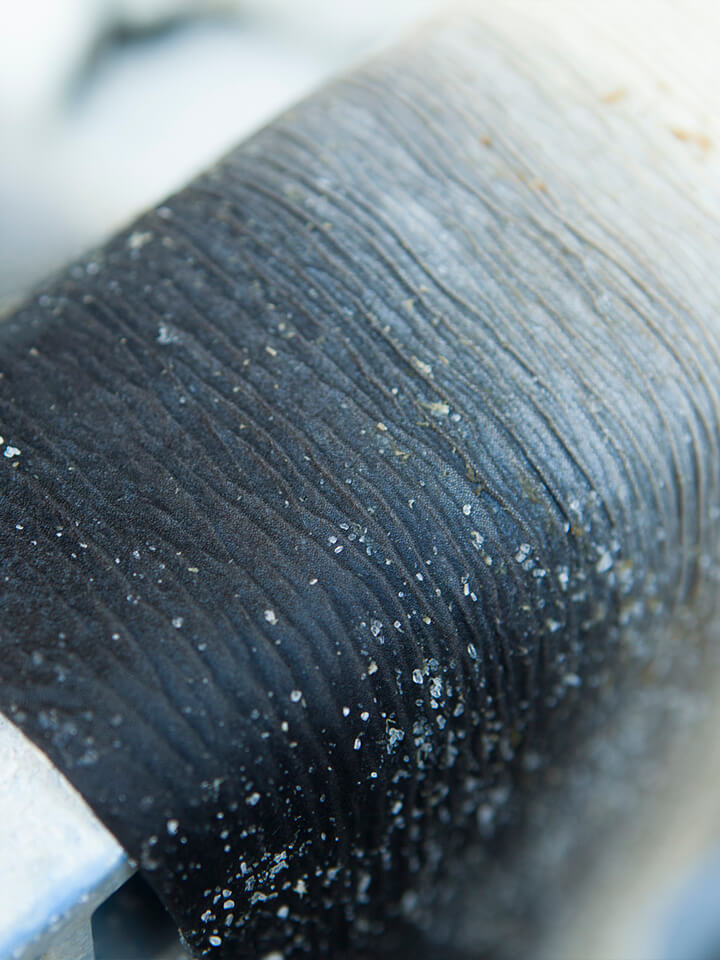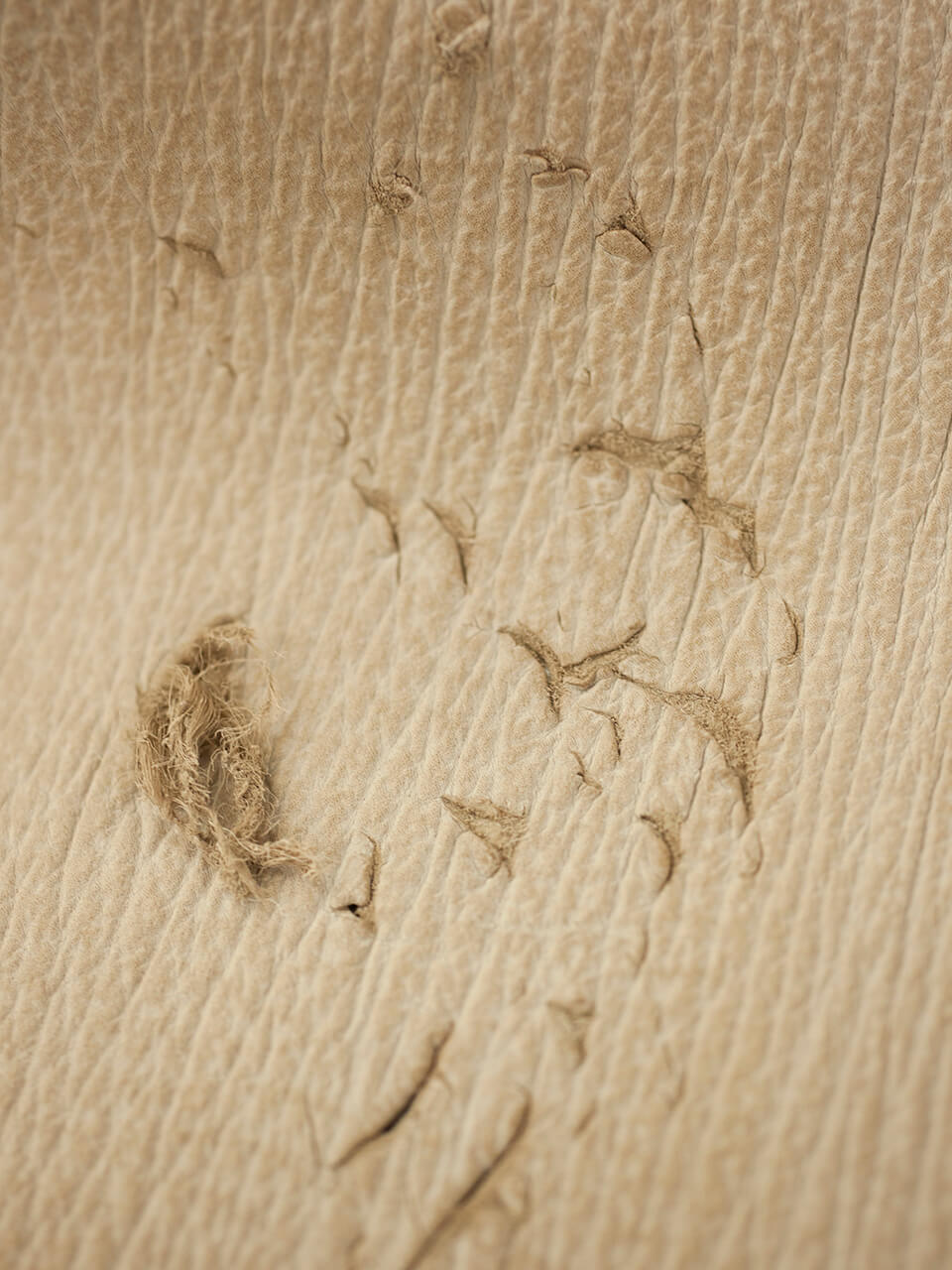
Knowledge: Shark leather
Shark leather:Domestic natural leather with great potential

"Sharks are considered fierce creatures, but I was surprised by how elegant the leather is, and that gap was what I was attracted to most."
Taketo Nakagawa, a director of Lept Shark, says. The shark leather business card holder he takes out from his pocket is exquisite. The staff, who sorts hundreds of shark leathers a day, goes on to say, "It's not as famous as cowhide, and it's not as flashy as ostrich, but it has a beautiful wrinkle pattern on the grain surface, and it has its own assertiveness."
Raw shark hide comes from a fishing port in Kesennuma City, Miyagi Prefecture, which boasts the largest amount of sharks landed in Japan. The fishing port was hit hard by the Great East Japan Earthquake in 2011, but Mr. Nakagawa teamed up with Mr. Murata, the largest shark processing company with whom he had a business relationship with, to form a shark skin processing company "Lept Shark" in 2013. Currently, the processing is done at a factory in Nagano Prefecture, but in the future they plan to build a factory in Kesennuma so that it will lead to the reconstruction of the city as a local industry.
Shark leather has been used for a long time, and now the technology has been further developed to make it a more supple, light and durable leather material.
When we think of a shark, we think of a huge body of several meters, but actually, they are using a medium-sized shark called the "blue shark." They are known for their shark fin, which is an expensive ingredient in Chinese cuisine. There is a difference between males and females, and males have a slightly smaller body than females, and the patterns are more fine and beautiful. Some females have multiple wounds because they are bitten by male sharks during breeding. Some can be fatal, demonstrating that shark breeding is truly life and death. Sharks are easily scratched when they are landed and carried with a gaff, and the amount of leather that can be used is about 10% of the landed amount.
The tanning process is not so different from cowhide, but it requires a scale removal process. Unlike cows, shark skin has no hair roots, so it is difficult for water to pass through, and it does not shrink easily even when it gets wet.
"While most of the raw hide of leather products are imported from overseas, shark leather is one of the few leathers that can be procured in Japan. Moreover, unlike livestock, it is a rare natural material that grows naturally in the ocean. Currently, most of the demand is domestic, but I would like to export more overseas in the future,” says Mr. Nakagawa.
The rebuilding of Kesennuma and exporting shark leather overseas. Shark leather is Japanese leather with great potential.

Female shark leather. The scratches on the surface are traces of being bitten by male sharks during breeding. There is great drama in creating new life.

Shark leather after tanning and drying. The area used is limited due to the dorsal fin being cut for food.
Shark leather tanning is characterized by removing the scales and bleaching. The skin is rough when touched in the opposite direction of the flow of the scales. The scales are soaked in hydrochloric acid to remove them and bleach the remaining black color. The tanning agent is vegetable based, which can bring out the original pattern of the shark. Since it is derived from plants, it has the advantage of being easily accepted overseas. After that, paint is applied according to the pattern of the skin.